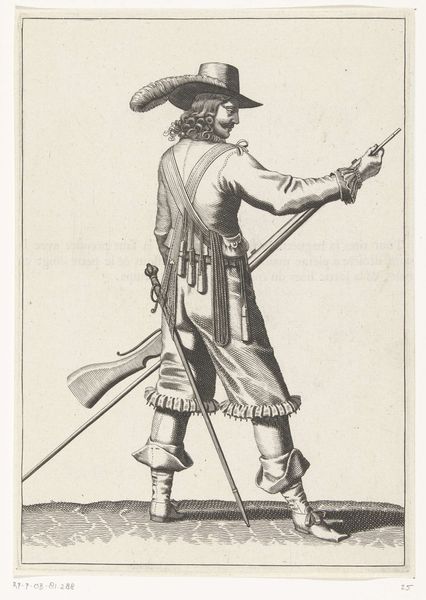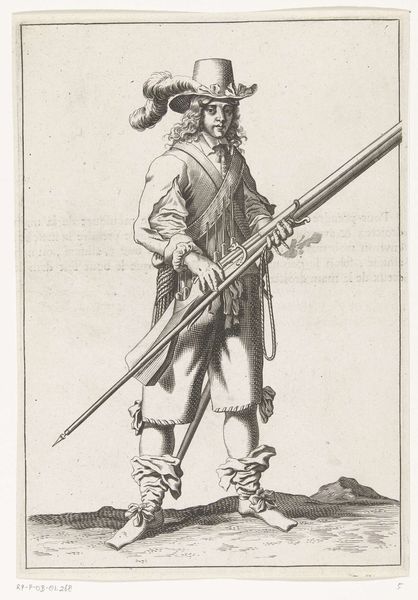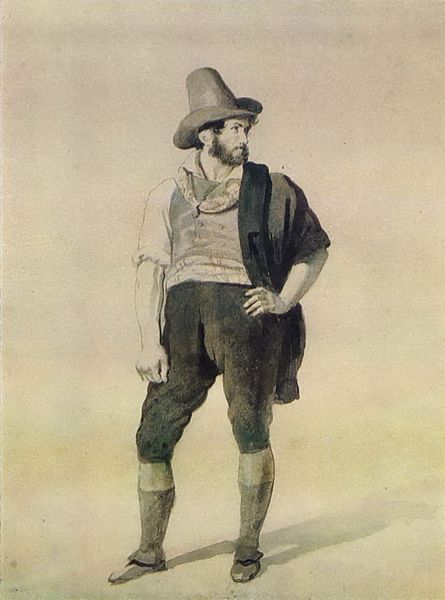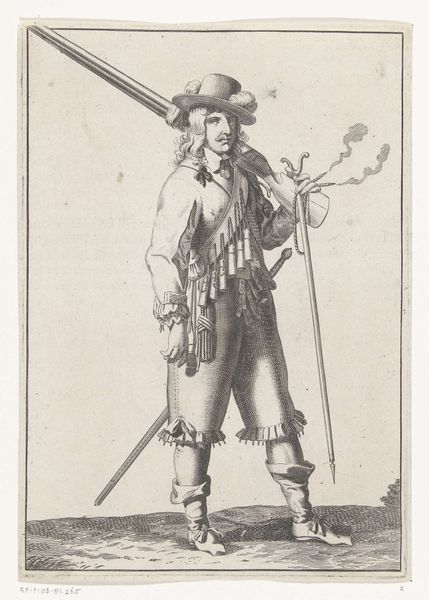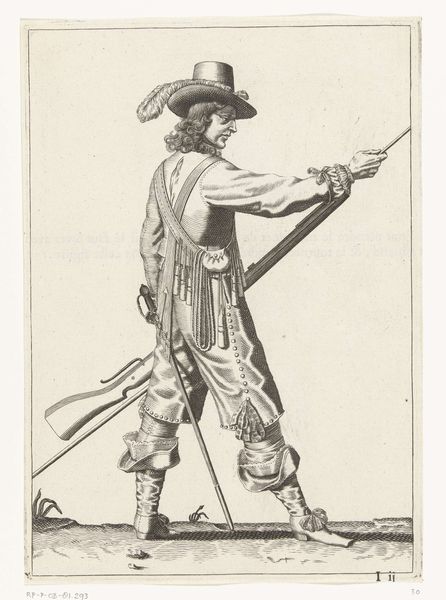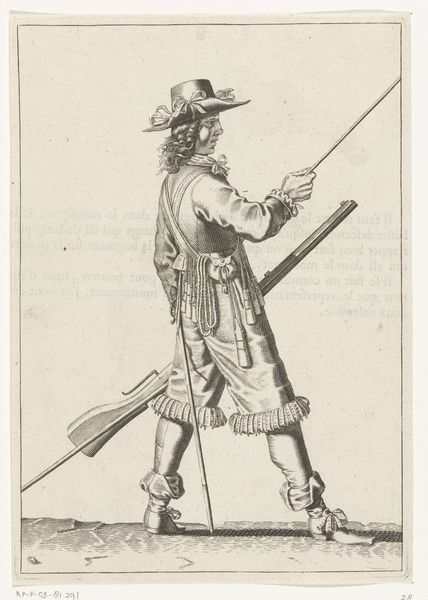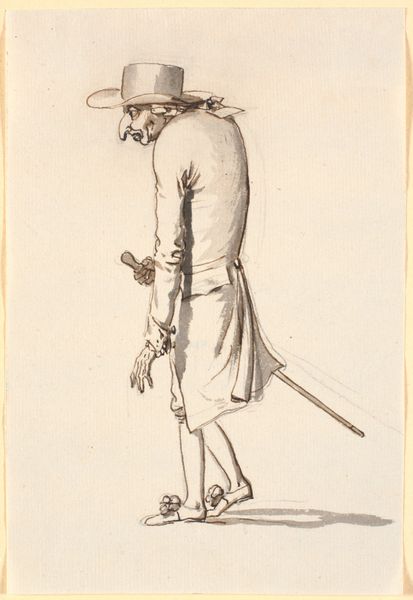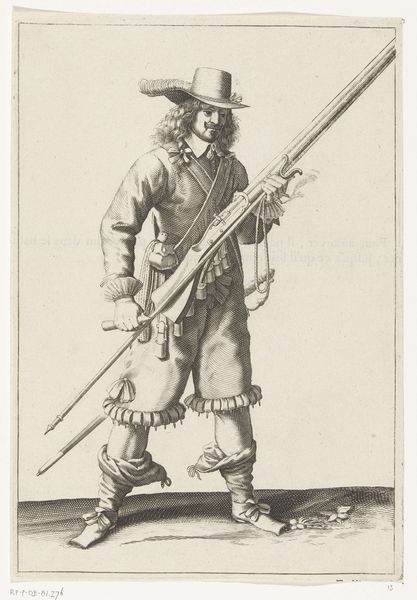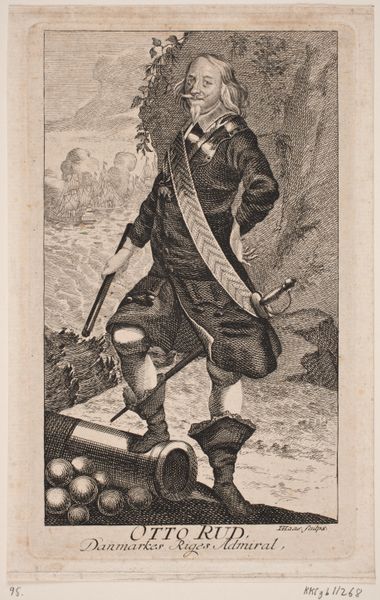
Dimensions: 50 x 35 cm
Copyright: Public domain
Curator: Immediately striking is this image's warmth. It radiates through the red of his cloak and the muted gold of his trousers. A youthful figure is caught in transit, ready to walk onwards. Editor: Carl Haag painted this watercolor in 1856. It is titled "An Italian Peasant." The choice of watercolor and the focus on a figure rooted in the land feel significant given the artistic climate of the time. It is easy to interpret as an archetype that serves to embody romantic notions about Italian culture. Curator: Indeed, observe how his staff and bag appear both as tools and as emblematic burdens. The staff and bag remind us that peasant life isn’t a simple bucolic fantasy. But consider also how Haag subtly emphasizes youth and vitality – there is no suggestion of crippling hard work here, or if there is, Haag looks right past it! He could almost be posed, ready to break out into an aria! It might reveal a societal desire at the time to imagine labor without suffering, tradition without oppression. Editor: The layered meaning you discern in his staff, at once practical and symbolic, points to enduring peasant iconography. For centuries, peasants have symbolized both the pastoral ideal and the weight of history's burdens. The simple costume – the hat, the wrappings around his legs – speaks volumes. These elements convey a sense of timelessness, a romantic vision tied to the land. But Haag avoids idealization by including naturalistic elements like the shadow at his feet, and an ambiguous facial expression. What sort of life does his journey actually promise? Curator: Perhaps Haag's rendering offers precisely the ambiguity to serve multiple readings. It reflects a broader 19th-century fascination with rural life viewed through lenses of nostalgia, exoticism, and social commentary. It brings forward questions regarding land, belonging, and cultural identity in a world increasingly hurtling toward urbanization. Editor: Exactly. This artwork gives us pause to ponder how enduring symbols intertwine with our ongoing social narratives. We understand more about who we are when we grasp how potent a symbol like “peasant” persists, carrying multiple interpretations in a world ever changed. Curator: Haag asks more than he answers in portraying this anonymous peasant, leading us to reflect on our place within interconnected histories of representation and social power. Editor: A compelling, and unexpectedly complex figure to consider through this journey.
Comments
No comments
Be the first to comment and join the conversation on the ultimate creative platform.


